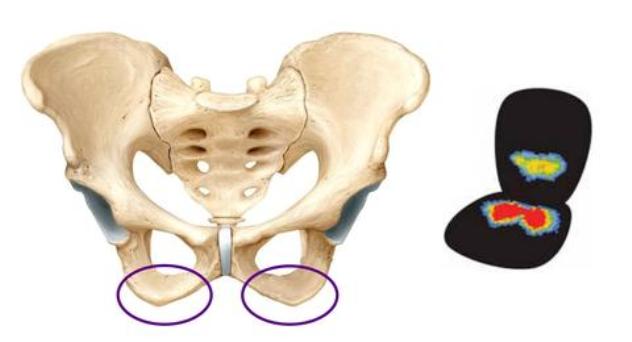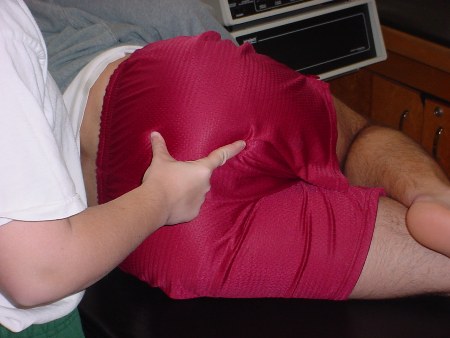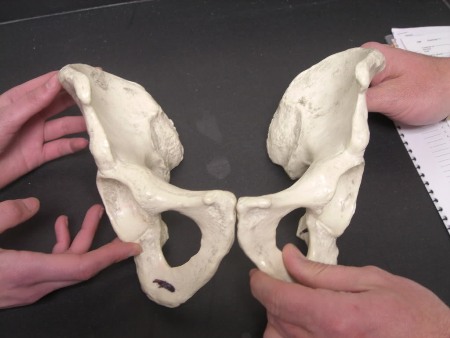The name of this syndrome consists of two parts, Ischial and Tuberosity. Let’s explore the meaning and origin of both. Ischial basically comes from ischium, a pelvic bone and tuberosity is copied from a Latin word known as tuber which means lump. Ischial tuberosity is the bony protrusion which takes body’s weight when we sit. Due to this reason ischial tuberosity is also known as sitting bone.
If we go in a little detail of this structure, it is found that it is a swollen part or broadening of the bone in the frontal portion of the ischium, the lowest of the three major bones that make up each half of the pelvis. As the point of fusion of the ischium and the pubis, it is attached to various muscles and due to such a unique fusion, it supports the weight of the body when one is sitting. Pain in this area is usually experienced by athletes, including soccer players, cyclists, and any type of jumpers or runners, especially hurdlers. This medical condition is often confused with another known as ischial bursitis, which is an even more painful condition than tendonitis.
The forceful pull of the muscles can happen in a variety of ways like during sports, if you fall or have some other type of injury, or through the overuse of the hamstrings, as is common among runners and soccer players. If you have pain on the bottom of the buttock and in the hamstrings, often quite severe and prolonged when sitting, especially on firm surfaces and when running or lifting objects, you are most probably going through this syndrome. The area may also be quite tender and sensitive to touch.

Ischial Tuberosity Syndrome Pain, Pictures, Treatment
Like a triangle, Ischial tuberosity is a part of body that supports the body weight during the sitting posture and adjoins with different major muscles which are associated with legs. If you are suffering some kind of pain in this area then keep reading to beware of relevant information about it.
Ischial Tuberosity Syndrome Pain
As mentioned above, Ischial tuberosity is very common to athletes who take part in the sports such as jumping, running, cycling, soccer, skating etc. Due to these activities, athletes have constant strain into the leg muscles. Repeated overload causes muscle pull, injury and inflammation. It may become worsens by extended sitting position, weight lifting and sitting on rough surface.
Sometimes it can cause rare muscle detachment, ligament tearing etc. Usually people who are paralyzed and sit over a wheelchair for a long duration of time, are also suffering from it. Even those who are not maintaining proper posture during working on prolong period in front of the computer, also complaint the same
Causes of Ischial Tuberosity Pain
If you are sporty and the nature of sport you do is athletes associated, then you worry about that pain. Extended overload is the primary reason. This pain become more prominent while sitting or fast walking or running. Sometimes it comes along with swelling and pressure generates significant pain at the site.
Pictures of Ischial Tuberosity Pain

If you are feeling pain in this area, you are more likely develop Ischial Tuberosity Pain

Showing how this area looks like while sitting

An x-Ray showing the exact pain position
Treatment of Ischial Tuberosity Pain
In very simple words, we can termed this pain as “pain in the butt” and often advised simply to take rest. But this advice may not enough for all cases because blood does not get circulated properly into the damaged tissues and delays the wound healing due to lack of oxygen supply. Due to this, stiffening of the muscular tissues may occur.
Diagnoses error of the ischial tuberosity pain is one of the major issue that is associated with this medical condition. Mostly it becomes a confusing situation and misdiagnosed with ischial bursitis. For proper management of the pain, it is essential to get a correct diagnosis and provide precise treatment to relive the pain. Following are some popular techniques which are widely used to treat this condition. These techniques can be categorized in to two sections, short term and long term.
RICE
RICE technique comprises rest, ice, compression and elevation. This technique is considered least effective as it does not restore tissue injury. But if you are going through mild pain then as short term pain management, it may prove effective but not for chronic chronic cases. Prolong rest or ice compression causes decrease in blood circulation and leads to delay in the wound healing process.
Physiotherapy
Physiotherapy is also one for short term but it doesn’t provide permanent solution as it do not rectify damage which occur in the ligaments or muscular tissues.
Medicines
Different analgesic medicines are prescribed in this case which help to reduce the associated pain but do not heal the damaged tissues. The most frequently prescribed medicines are non steroidal anti-inflammatory drugs (NSAIDs) e.g. Aspirin, COX-2 inhibitors e.g. Etoricoxib, steroidal drugs e.g. Hydrocortisone.
Prolotherapy
Prolotherapy is one of the promising treatment for ischial tuberosity pain. In this treatment process dextrose solution is injected at the damaged tissue areas which then allow increasing fluid flow on those particular tissues and causes inflammation on those particular areas. It increases the blood flow and repairs the damaged part by boosting the immune system on those affected cells.
Stem Cell Therapy
Stem cell procedure produces mild inflammation on the affected ligaments to promote self-restoration of these tissues and reduce associated pain. Stem cells therapy promotes tissue healing by utilizing regenerative cells which obtain from patient’s own stem cells, just like natural process of our physiological system.
 Health & Care Information
Health & Care Information 

